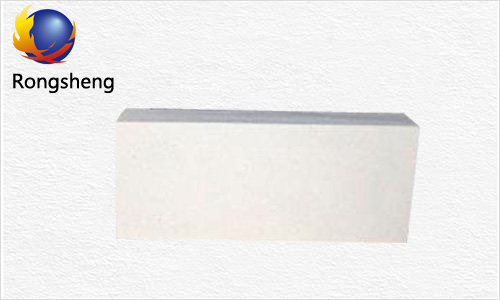

Dolomite brick as a kind of hot sales refractory bricks for furnace application in Rongsheng factory manufacturing with converter and lining of the refining furnace outside the furnace. Dolomite fire brick have good properties of high refractoriness, strong resistance to alkaline slag erosion, and strong kiln skinning ability. There are high quality refractory dolomite fire bricks for sale cheap in RS company can provide standard size dolomite refractory brick specification and category as well as competitive price & high-grade quality fireproof dolomite brick products, other specification and size of dolomite fire brick according to customer requirements,welcome to contact us or email us for free quote or price list.
Dolomite Brick Features
1. Refractory dolomite bricks have low alkali resistance
2. Refractory dolomite bricks have excellent slag resistance
3. Fired refractory bricks have high temperature performance
4. Fired refractory bricks have better thermal shock resistance
Dolomite Brick Specification
| Item | RS-A | RS-B | RS-C | |
| Refractoriness | ℃ | 1850 | 1850 | 1850 |
| Bulk Density | g/cm3 | 3.05 | 3.05 | 3.05 |
| Apparently porosity | % | 3.0 | 3.0 | 3.0 |
| Cold Crushing Strength | Mpa | 61.2 | 61.2 | 61.2 |
| 0.2Mpa under load refractoriness | ℃ | 1700 | 1700 | 1700 |
| MgO | % | 80 | 80 | 75 |
Dolomite Brick Application
1. Refractory dolomite bricks suitable for refining equipment outside the furnace, such as AOD furnace, VOD furnace and refined ladle slag line.
2. Refractory dolomite bricks using in the cement kiln, steelmaking converter permanent layer, furnace bottom and ladle.
3.Dolomite bricks used in steelmaking converter lining, open hearth furnace, electric furnace wall, followed by thermal equipment such as furnace refining equipment and cement kiln
Dolomite Brick Advantage
Dolomite brick has the advantages of abundant raw material source, low price, good corrosion resistance to high alkalinity refining furnace slag, favorable for purifying molten steel and little environmental pollution, and dolomite brick is used in AOD furnace, VOD furnace and refined ladle slag line. Increasing fired dolomite bricks applications in external refining units.
Dolomite Brick Using Precautions
1.Dolomite bricks products have poor water resistance, high packaging and storage costs, even built into the rotary kiln. If you do not pay attention, there will be a large performance degradation, even due to hydration, the loss is completely reported, the operation rate is low. On the production line, dolomite brick is easy to deliquesce and deteriorate.
2.Rongsheng Refractory Manufacturers Provide for Two common Dolomite Bricks Specification
❉Semi-Stabilized Calcined Magnesium Dolomite Brick
The semi-stabilized dolomite brick is made of sintered dolomite brick or sintered magnesium dolomite, and dolomite brick is formed by mechanical molding after paraffin, tar pitch or polypropylene as a binder, and then immersed in tar to prevent moisture tidal hydration.
❉Tar Dolomite Brick
The raw material of the tar dolomite brick is the same as the raw material of the semi-stabilized sintered magnesium dolomite brick. Firebricks can be combined with tar and asphalt, dolomite fire brickis not fired after machine molding, and is used directly.
The tar dolomite brick is mainly used in the lining of steelmaking converters and electric furnaces.
Dolomite Brick Manufacturing Process
1. Using coke as fuel, fire dolomite brick is calcined in a shaft kiln. Since the calcination temperature is generally only 1650 to 1700 ℃, the kiln temperature is not easy to be uniform; therefore, the calcination quality is poor, the unburned product is more. In addition, due to the incorporation of coke ash, the content of impurities in the dolomite sand is as high as 6 to 10%.
2. Using heavy oil as fuel, dolomite bricks are calcined by rotary kiln and shaft kiln. Since the calcination temperature is as high as 1700 to 1800 ° C, the kiln temperature is uniform and there is no fuel ash contamination, so the quality is good. Most of this method is now used to prepare dolomite clinker. Sometimes in order to improve the hydration resistance of the clinker and reduce the sintering temperature, a small amount of iron oxide powder (generally <3%) is added, the fine powder is formed into a ball or a compact, which is calcined by a high-temperature rotary kiln to obtain a so-called half. Stability dolomite sand.
3. Two-step activation calcination. The raw ore is first lightly burned at 1000-1100 ° C, then pulverized, digested (added water mature lime Ca(OH) 2 ) or partially digested, trapped, compacted, the obtained "activated material" is calcined with ashless fuel. The sintering temperature at this time can be reduced by 100-200 ° C compared with the non-activated treatment, the obtained dolomite sand has high purity, compact structure, uniform composition and strong hydration resistance.
Why Choose RS Firebrick Factory as Dolomite Brick Supplier
❉Rongsheng refractory firebricks factory is specialized in exporting refractory bricks for more than 20 years.
❉Rongsheng factory has famous refractory material parts suppliers, refractory bricks , castable refractory material, lightweight insulation firebricks and prefabricated bricks according to client requirement , which can offer customers’ a high quality products and assurance.
❉3years after sales service
❉7*24h after sales online chatting
❉High quality refractory bricks guarantee
❉Professional technical guidance
❉Silicate carbide competitive price for sale
❉Our experienced technicians and design engineers are capable of analyzing client’s needs and designing the most suitable plant configuration to satisfy the project specifications.
